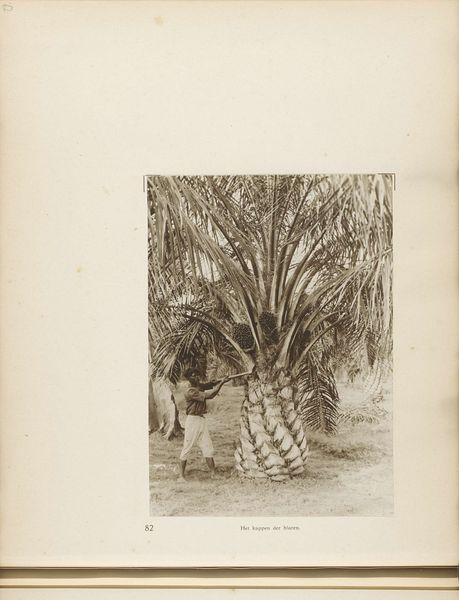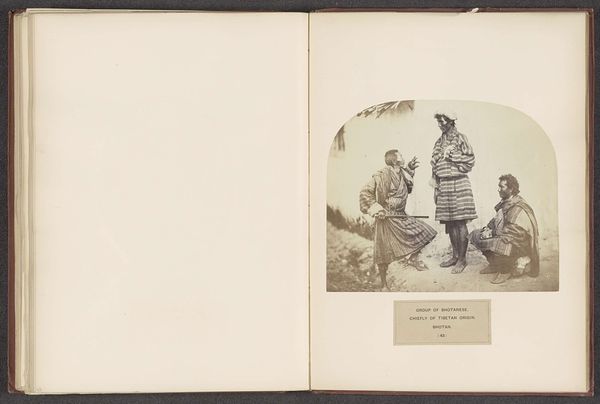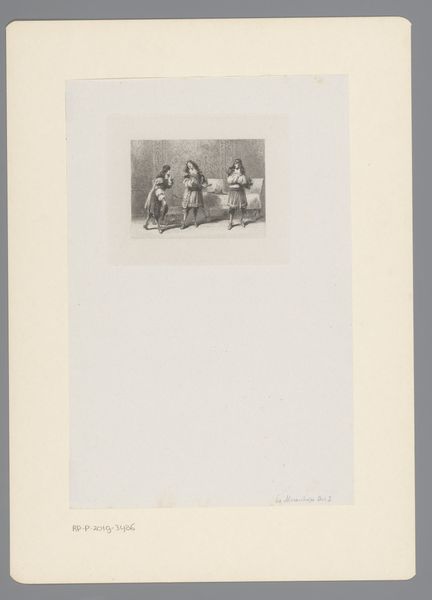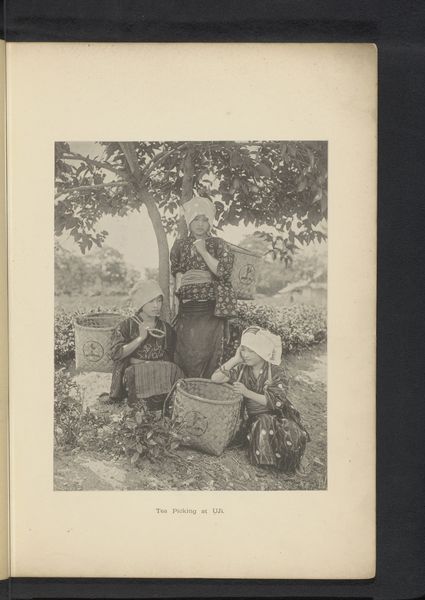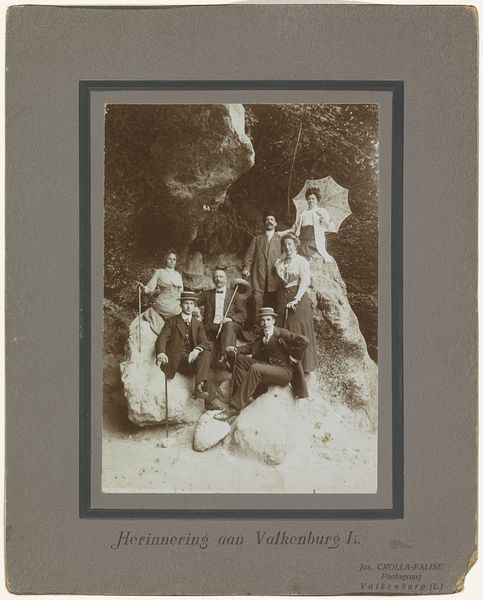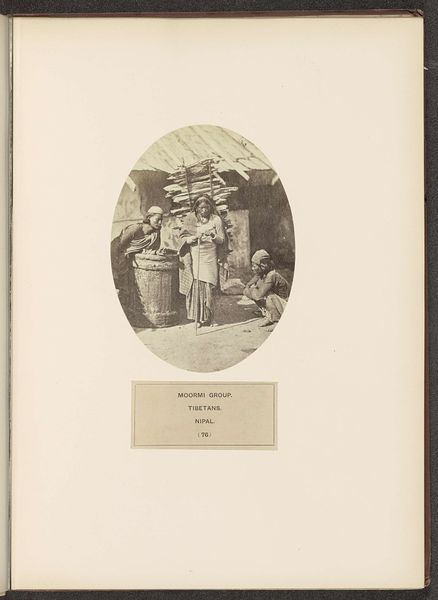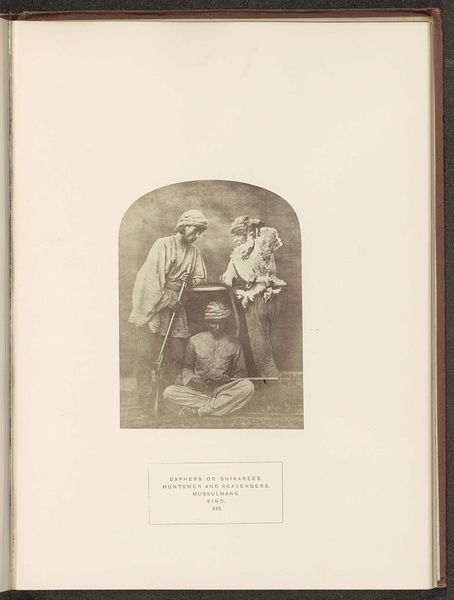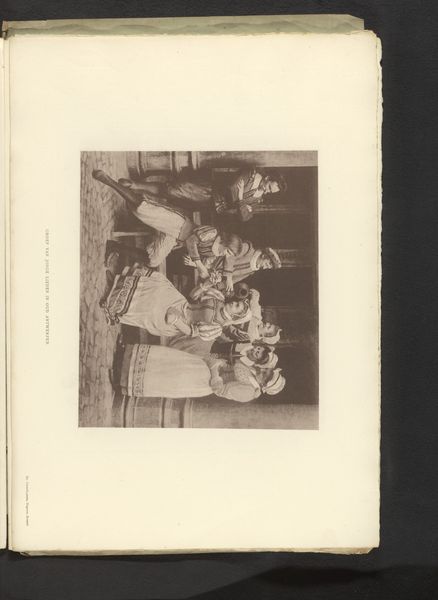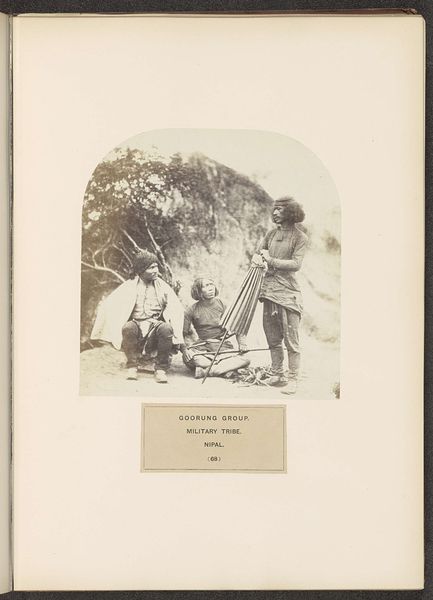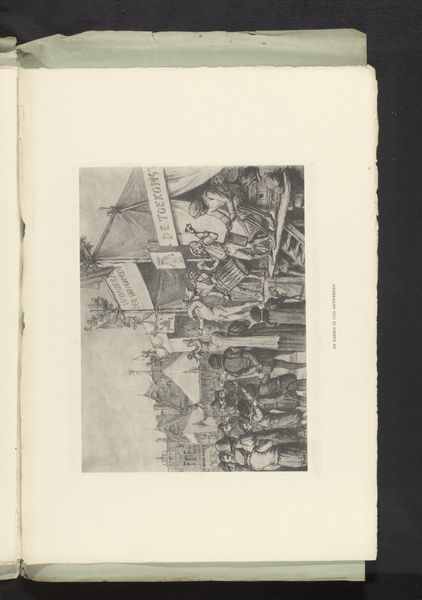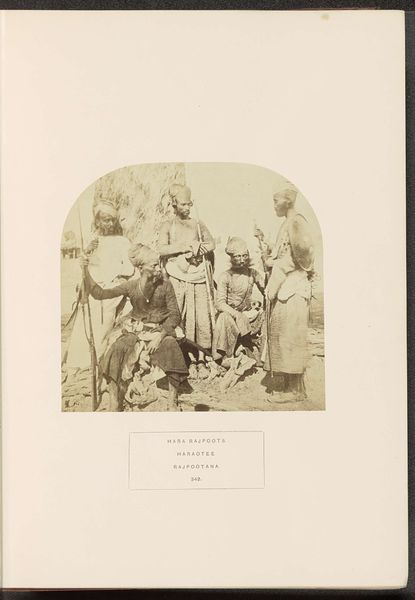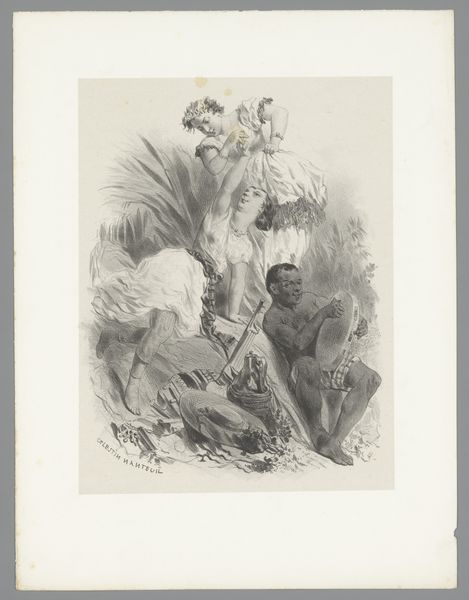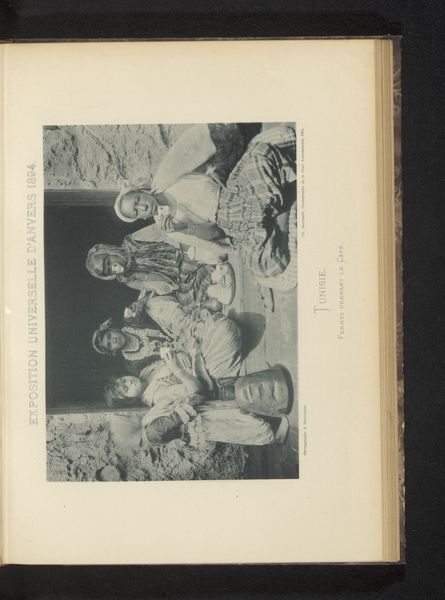
Pagina 85 van fotoboek van de Algemeene Vereeniging van Rubberplanters ter Oostkust van Sumatra (A.V.R.O.S.) c. 1924 - 1925
0:00
0:00
print, photography, gelatin-silver-print
#
portrait
#
dutch-golden-age
# print
#
landscape
#
photography
#
orientalism
#
gelatin-silver-print
#
realism
Dimensions: height 240 mm, width 310 mm
Copyright: Rijks Museum: Open Domain
Curator: This gelatin-silver print, titled "Pagina 85 van fotoboek van de Algemeene Vereeniging van Rubberplanters ter Oostkust van Sumatra (A.V.R.O.S.)," was created around 1924 or 1925, part of a photo album documenting the activities of a rubber planters' association in Sumatra. The photographer is J.W. Meyster. Editor: The immediate impression is one of weight, literally and figuratively. These men bear the burden of something, their expressions stoic, framed by the dense foliage behind them. The grayscale enhances the solemnity. Curator: Absolutely. Palm oil held a great significance during this colonial era, a symbol of both progress and exploitation. In terms of symbolism, the fruit itself becomes a potent representation of the complex socio-economic dynamics at play. It is interesting that the number 85 is added, hinting at an objective report about the association. Editor: I read this image quite differently. To me, the presence of the sitters speaks of how the economy profited by their backs. They fade somewhat into the background while the product stands more prominently in the frame. Curator: That interpretation resonates strongly. It makes you consider their personal identities beyond the work and its colonial background. Even their hats hint to traditional labor, which were forced onto the farmers and inhabitants of Sumatra. Editor: Precisely. There's a sense of objectification—a focus on labor rather than laborers. How do you see the setting affecting our perception? The image's composition and backdrop play into how they become symbols of Sumatran forced labor at that time. Curator: The jungle and the heavy fruit that they carry certainly accentuate their endurance and silent perseverance. These elements highlight the cultural implications. This fruit transcends the individual efforts and instead represents the Sumatran contribution as a whole. Editor: Ultimately, the photograph makes one reflect on our engagement with these systems and on what is unseen by its consumers. Curator: It reminds us that, behind seemingly straightforward images, there often lie tangled histories of humanity. Editor: It shows us what photographic orientalism actually looked like back in the old days and offers ways of engaging with them in the modern world.
Comments
No comments
Be the first to comment and join the conversation on the ultimate creative platform.
